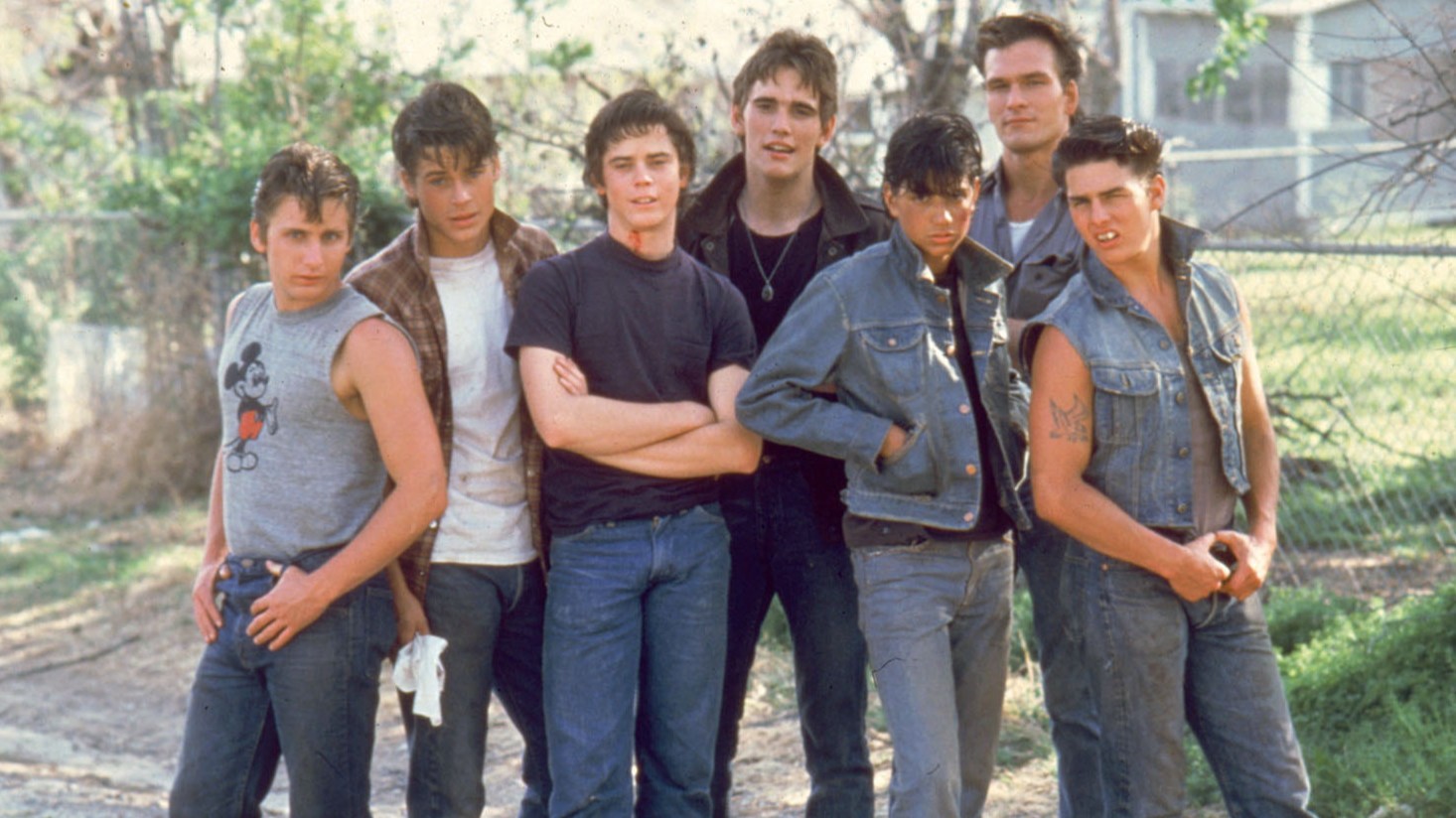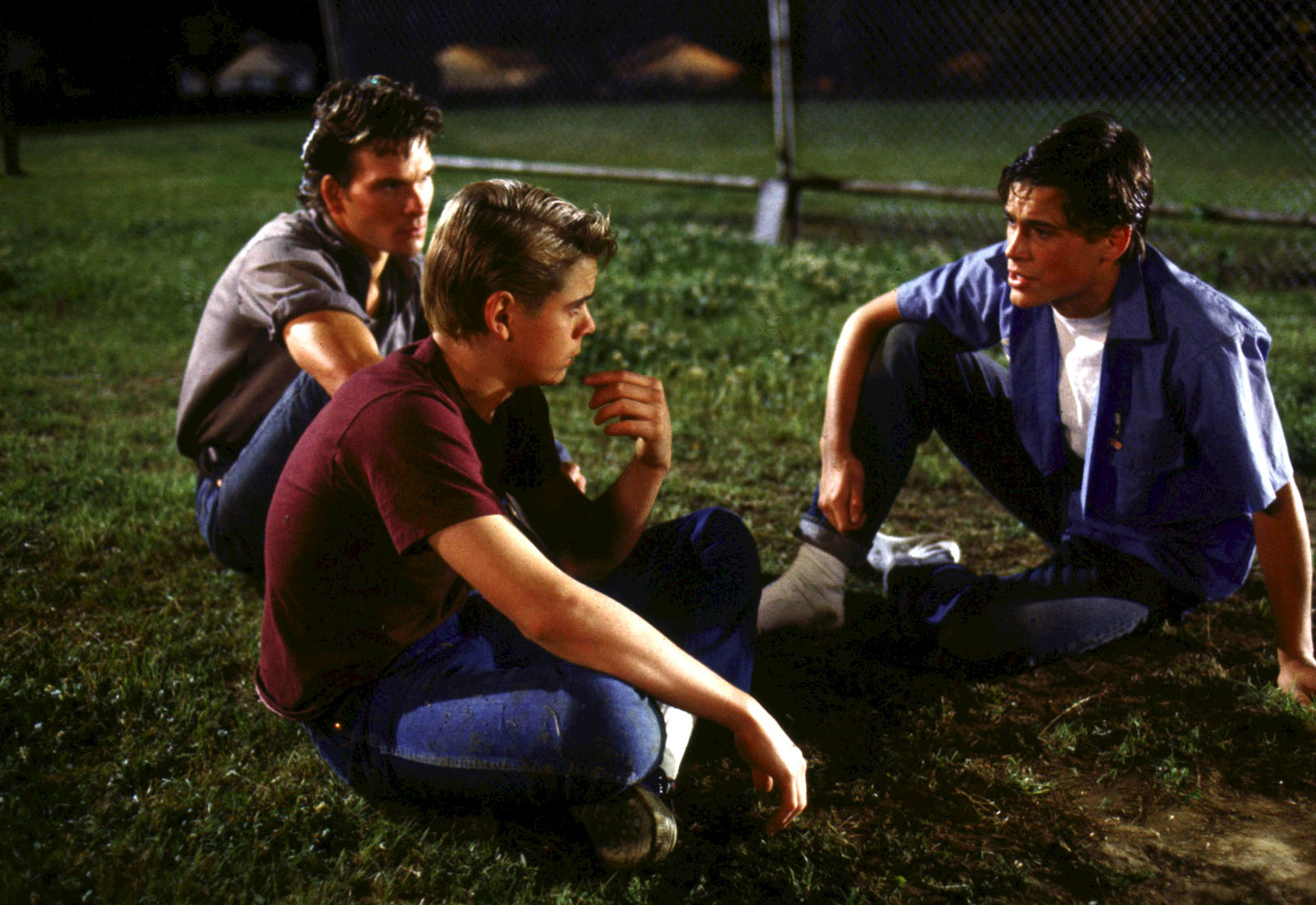Table of Contents Show
The first time I remember seeing the word dead written down wasn’t at a funeral or even in a classroom. Instead, the letters were printed on the cover of an old paperback book. I pulled it from where it was tucked in the corner of a shelf, and I sat on the floor staring at it.
My Brother Sam is Dead by Christopher Collier and James Lincoln Collier.
I thought I knew what dead meant then, as a seven-year-old with a book. I didn’t really, of course, and I probably still don’t, but that moment and several other unforgettable interactions with literature began to shape my understanding of the permanence of death. There was something unavoidable about it, written out that way; black letters stamped against the off-white page. The following are five books that changed my — and many other readers — perspective on mortality forever.
1. The Outsiders
In seventh grade, my English class read The Outsiders by S.E. Hinton. I froze in my desk, reading and re-reading the same paragraph about Dallas Winston dying.

“And even as the policemen’s guns spit fire into the night, I knew that was what Dally wanted. He was jerked half around by the impact of the bullets, then slowly crumpled with a look of grim triumph on his face. He was dead before he hit the ground. But I knew that was what he wanted, even as the lot echoed with the cracks of shots, even as I begged silently — Please, not him… not him and Johnny both — I knew he would be dead because Dally Winston wanted to be dead and he always got what he wanted” (( Hinton, S.E. The Outsiders. Viking Press, 1967, New York City. )). In the book, Dallas’s physical description matched one of my best friends, and I kept picturing him there, dying on the pavement. But, even more than the imagined ties to my own life, the phrasing refused to leave my mind.
Jerked half around by the impact of the bullets
(( Hinton, S.E. The Outsiders. Viking Press, 1967, New York City. ))
Slowly crumpled with a look of grim triumph on his face
(( Hinton, S.E. The Outsiders. Viking Press, 1967, New York City. ))
Dead before he hit the ground
(( Hinton, S.E. The Outsiders. Viking Press, 1967, New York City. ))
Just like that, it was all over.
Dead, when he used to be alive. Lost when he was still right in front of them. If I skipped back to the top of the page, Dallas was there. By the time I got to the bottom, he was gone. It was unfathomable to me, and no matter how many times I read it, I could not register the suddenness of the void.
2. Harry Potter
Odds are nearly every millennial harbors at least one Harry Potter death memory. Maybe it was Dumbledore, splayed against the night sky as he fell from the tower; Sirius, slipping through the shimmering veil into the beyond; Dobby, a knife ruining his small frame or one of the dozens depicted in the final battle in the great hall. Not many young muggle readers journeyed through Hogwarts unscathed. All of the deaths were haunting, and even though by the last chapters of The Deathly Hallows loss wasn’t new, it was still always devastating.

Not only was death present in Harry Potter, but it was recurring. The theme of grief runs throughout the books, and the realization of that set in for me with Cedric Diggory’s death in 2000. I was eight years old, and suddenly my favorite series went from an exciting, adventurous romp to a high-stakes, life-and-death battle. Cedric Diggory was a good guy. Up until a flash of green light that ended his life at 17-years-old, I assumed that the good guys never lost.
Unlike The Outsiders, built on a premise of fictionalized reality, Harry Potter is magic. The witches and wizards in J.K. Rowling’s world can do anything — anything except bring the dead back to life. Perhaps the relative unfairness of death in an otherwise so fantastical realm made its presence additionally harrowing. Not even Hogwarts offers an escape from death. Regardless, both the magic and the truth are made all the more powerful because of it.
3. A Separate Peace
Two years after my run-in with The Outsiders, I fell in love with Finny. A Separate Peace — often encountered in American junior high or high school curriculums — tells the story of a thoughtful if an otherwise average boy named Gene Forrester. At a prestigious New England boarding school, Gene meets Phineas, Finny for short. The boys become friends, and Gene — me right along with him — can’t help but fall in love with the beautiful, charming, brave, and ultimately doomed Finny.
In a moment of jealous, confused abandon, Gene sabotages Finny as he jumps from a branch into a river, and when he hits the water, his leg-breaks gruesomely. At first, it seems as though Finny will recover, but eventually, a complication from the fracture kills him. John Knowles, the author, recounts Gene’s entire day leading to Finny’s death. He goes to class. He eats lunch. He goes back to the hospital to visit his friend. And his friend is dead. “I did not cry then or ever about Finny,” Knowles wrote. “I did not cry even when I stood watching him being lowered into his family’s strait-laced burial ground outside of Boston. I could not escape a feeling that this was my own funeral, and you do not cry in that case” (( Knowles, John. A Separate Peace. Bantam, 1959, New York City. )).
Whether Gene’s love for Finny was romantic or platonic is not the point, and it never really was. The loss cuts just as deep and scars just as permanently either way. And he might not have cried, but I did.
4. Looking For Alaska
John Green is probably best known for his modern-day teenage tragedy A Fault in Our Stars. But years before it graced the shelves, a wisp of smoke rising against a black abyss, caught my attention in the local library. Looking for Alaska, Green’s semi-autobiographical debut novel, broke my heart. Alaska’s death is not a surprise. The whole first half of the book counts down her days, almost unnoticeably at first, and then, as the number dwindles, in an increasingly brutal reminder that every day alive is another one closer to being dead. Ironically, the inevitability almost makes it harder to accept when it actually happens.

A single-car crash on a rainy night. The ambiguity of the circumstances. The narrator’s absence from the scene itself. The details that won’t go away — blue car, chipped nail polish, a kiss that tastes like mountain dew. Miles, the narrator, bombards his readers with memory after memory that haunts us as they haunt him. It’s easy to believe, as a teenager, that you will live forever. That death is just a hypothetical. The idea of someone being gone forever is too big to comprehend, and so it is dismissed or somehow falsely hoped that the void will one day return what it took. The entire second half of the book is spent straining against that fiction, working through newly uncounted days to grasp the ungraspable. Even by the end, we are all forever left looking for Alaska.
5. Code Name Verity
Julie Beaufort-Stuart does not go gentle into that good night.
(( Thomas, Dylan. “Do Not Go Gentle Into That Good Night.” 1947, London. ))
She charms her way into the souls of her friends and the hearts of her enemies. She plays and teases and toils and cajoles and taunts. In the end, when only the ultimate escape is left, she asks for it. Because she is Julie because she is only to be extinguished on purpose, she chooses to end in love.
At first, Code Name Verity seems like a typical WWII young adult drama centered on friendship and bravery. Julie, a Scottish spy captured by the German secret police, endures torture until she can no longer handle it. Then she writes what she calls a confession — a document that turns out actually to be information useful to the allied forces. When Julie is moved from her prison cell, the perspective of the book shifts to her best friend, Maddie. Maddie undertakes an increasingly desperate crusade to find and liberate Julie. But when they finally see each other again, the story shifts from an average teenage war story to a haunting literary moment that transcends age or genre.
Julie, about to be shot and mutilated by the Nazis, asks Maddie to kill her. She knows that she is asking too much. But she asks anyway. And Maddie, in a moment she would never forgive herself for, either way, pulls the trigger.
“I saw her body flinch – the blows knocked her head aside as though she’d been thumped in the face. Then she was gone. Gone. One moment flying in green sunlight, then the sky suddenly gray and dark. Out like a candle. Here, then gone”
(( Wein, Elizabeth. Code Name Verity. Hyperion, 2012, New York City. ))
We don’t always get to identify formative experiences in our lives consciously. Still, my encounters with these books shaped my perspective so viscerally that I can pinpoint the moments the impressions were left. Their old words, in black and white, shifted my world into new colors. Everyone who has loved and lost a literary character knows that a fictional death creates real sorrow. But, in the end, the weight of that grief makes us all more alive.
In the words of J.K. Rowling, “The ones who love us never really leave us.” And, as long we as carry them with us, in paperback or in memory, we never will.
